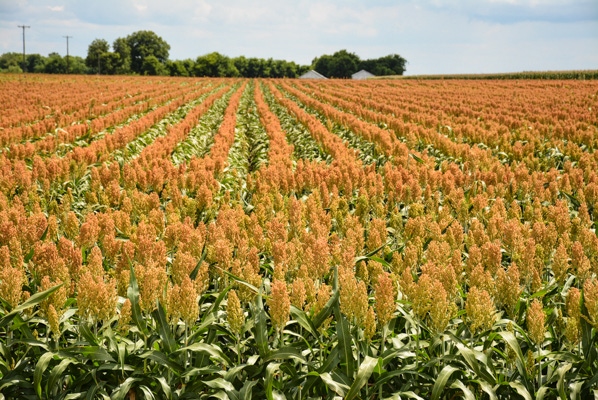January 29, 2020

Early in 2018, Team Sorghum began monitoring a situation largely playing out half a world away. The stakes were sky-high for sorghum farmers. A win might mean an agricultural renaissance here in the U.S. No one wanted to talk about what a loss might mean. Then, on Feb. 4, sorghum trade came to a virtual standstill when the Chinese Commerce Ministry self-initiated an investigation into imports of U.S. sorghum. Sorghum farmers were caught in the middle of the trade war between the U.S. and China.
Chris Cogburn discussed the situation with China in depth here during and just after the investigation, so I’ll spare you the gory details (and believe me, they were gory — ask any of the farmers who were directly involved).
Suffice it to say, owing to the rock-solid leadership of our farmer board and the advocacy of a few key leaders in Washington, D.C., we lived to trade another day. This means sorghum trade to China will continue, and maybe most importantly, it means sorghum farmers will have a role to play helping China meet their commitments under the phase one trade deal.
It seemed like forever, but we can finally talk about the deal in the past tense as Jan. 15 marked the historic signing by President Donald Trump and Chinese Vice Premier Liu He. The ceremony took place in the White House, where NSP chairman and Stockton, Kan., farmer Dan Atkisson was on hand to represent the sorghum industry. With the ink drying and the deal set to take effect on Feb. 14, our focus now turns to meeting the demand increased Chinese purchases will create.
As you likely know by now, the deal requires China in 2020-2021 to purchase an additional $32 billion in agricultural goods as compared to the 2017 baseline of $19.5 billion. This represents a 64% increase in agricultural trade with China over two years. While this is an ambitious target, China’s agricultural imports have grown at an astounding rate of 19.2% over the past 15 years, spiking to more than $120 billion in 2018.
The data are clear: China has a massive amount of demand for agricultural goods.
How will this affect sorghum farmers? It’s tough to say at this early stage, so instead of prognosticating I’ll give you a few historical numbers for context.
In the baseline year of 2017, Chinese imports of sorghum totaled 181 million bushels worth $838 million. Of the 358 million bushels produced in the U.S. this past growing season, 110 million are projected to be exported. Clearly, we’ll need more sorghum acres if we want China to purchase a significant amount of sorghum under the phase one deal. Can we do that?
As always, the answer hinges on profitability. According to Kansas State University cost-return budgets, sorghum leads the pack in south-central Kansas with a projected return of $96.57 compared to $70.34 for corn and $20.24 for soybeans. Keep in mind this ignores potential basis impacts from China entering the market, holding the price of sorghum to 91% of the price of corn. Any rally in sorghum basis will move these numbers further in sorghum’s favor.
Does this describe every situation? No. Every region and every farm is different, but the takeaway is the same: sorghum will be a competitive option this year. And with China in the mix, sorghum could be the best option.
Duff is a strategic business director for National Sorghum Producers. He can be reached by email at [email protected] or find him on Twittere @sorghumduff.
About the Author(s)
You May Also Like






